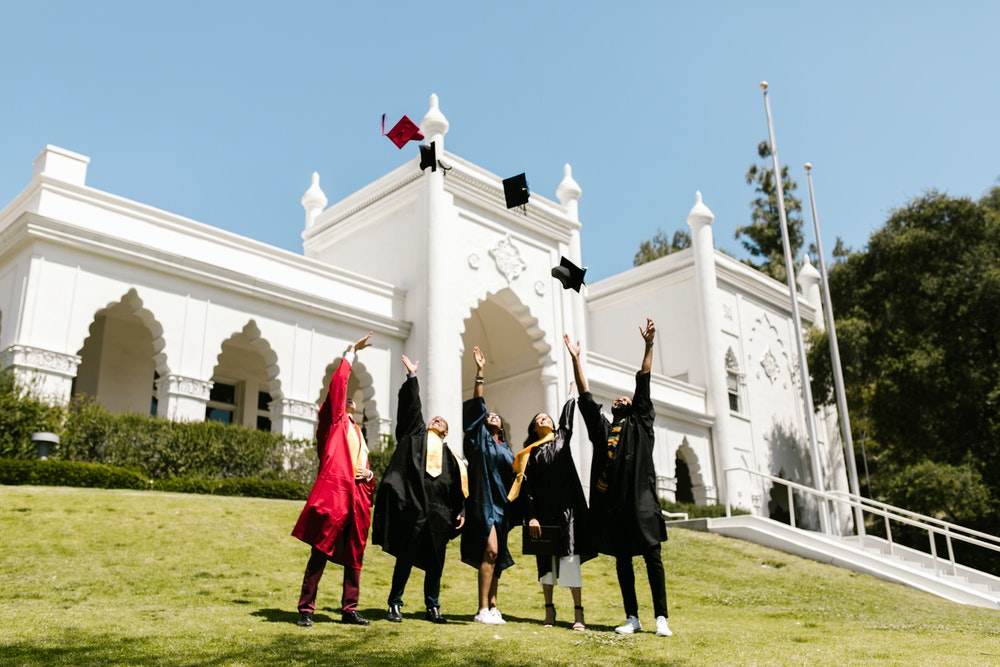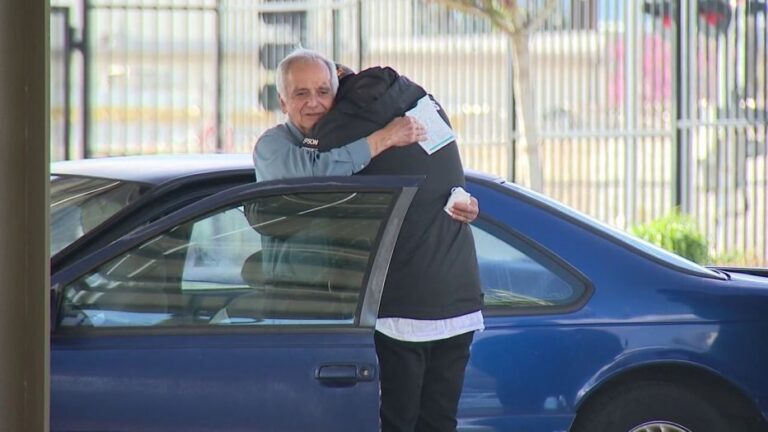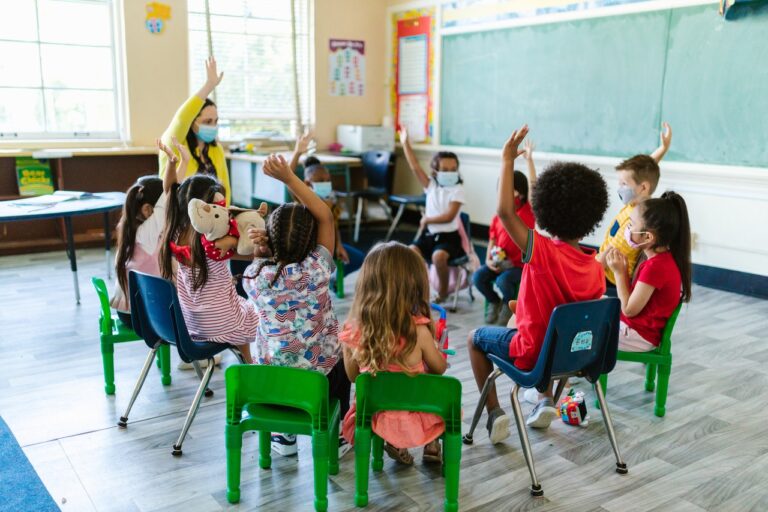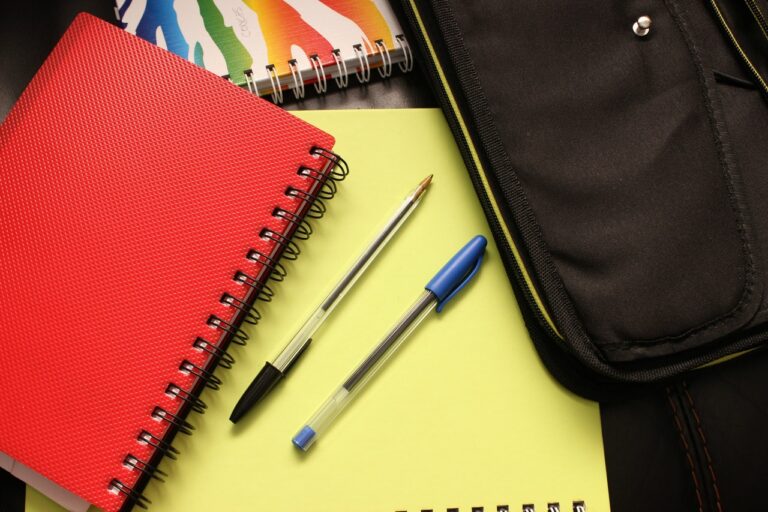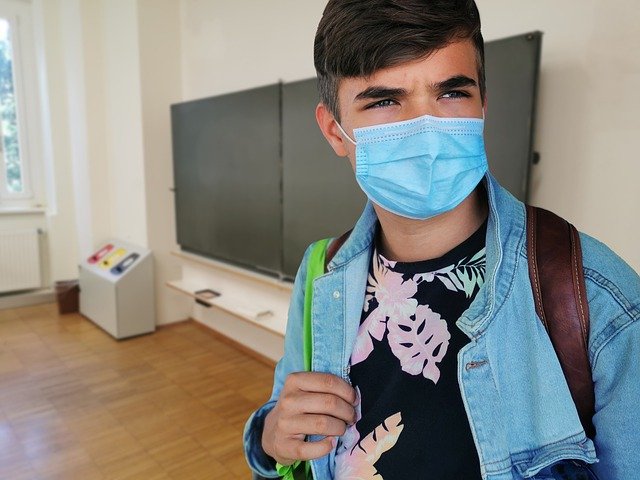Public education is facing a crisis of epic proportions
How politics and the pandemic put schools in the line of fire
Test scores are down, and violence is up. Parents are screaming at school boards, and children are crying on the couches of social workers. Anger is rising. Patience is falling.
For public schools, the numbers are all going in the wrong direction. Enrollment is down. Absenteeism is up. There aren’t enough teachers, substitutes or bus drivers. Each phase of the pandemic brings new logistics to manage, and Republicans are planning political campaigns this year aimed squarely at failings of public schools.
Public education is facing a crisis unlike anything in decades, and it reaches into almost everything that educators do: from teaching math, to counseling anxious children, to managing the building.
Political battles are now a central feature of education, leaving school boards, educators and students in the crosshairs of culture warriors. Schools are on the defensive about their pandemic decision-making, their curriculums, their policies regarding race and racial equity and even the contents of their libraries. Republicans — who see education as a winning political issue — are pressing their case for more “parental control,” or the right to second-guess educators’ choices. Meanwhile, an energized school choice movement has capitalized on the pandemic to promote alternatives to traditional public schools.Default Mono Sans Mono Serif Sans Serif Comic Fancy Small CapsDefault X-Small Small Medium Large X-Large XX-LargeDefault Outline Dark Outline Light Outline Dark Bold Outline Light Bold Shadow Dark Shadow Light Shadow Dark Bold Shadow Light BoldDefault Black Silver Gray White Maroon Red Purple Fuchsia Green Lime Olive Yellow Navy Blue Teal Aqua OrangeDefault 100% 75% 50% 25% 0%Default Black Silver Gray White Maroon Red Purple Fuchsia Green Lime Olive Yellow Navy Blue Teal Aqua OrangeDefault 100% 75% 50% 25% 0%Parents fear the omicron surge could mean another lost school yearEntering a third academic year disrupted by the pandemic, and in the midst of another covid-19 wave, parents, students and teachers are near a breaking point. (Jorge Ribas/The Washington Post)
“The temperature is way up to a boiling point,” said Nat Malkus, senior fellow at the American Enterprise Institute, a conservative-leaning think tank. “If it isn’t a crisis now, you never get to crisis.”
Experts reach for comparisons. The best they can find is the earthquake following Brown v. Board of Education, when the Supreme Court ordered districts to desegregate and White parents fled from their cities’ schools. That was decades ago.
Today, the cascading problems are felt acutely by the administrators, teachers and students who walk the hallways of public schools across the country. Many say they feel unprecedented levels of stress in their daily lives.
Remote learning, the toll of illness and death, and disruptions to a dependable routine have left students academically behind — particularly students of color and those from poor families. Behavior problems ranging from inability to focus in class all the way to deadly gun violence have gripped campuses. Many students and teachers say they are emotionally drained, and experts predict schools will be struggling with the fallout for years to come.
Teresa Rennie, an eighth-grade math and science teacher in Philadelphia, said in 11 years of teaching, she has never referred this many children to counseling.
“So many students are needy. They have deficits academically. They have deficits socially,” she said. Rennie said that she’s drained, too. “I get 45 minutes of a prep most days, and a lot of times during that time I’m helping a student with an assignment, or a child is crying and I need to comfort them and get them the help they need. Or there’s a problem between two students that I need to work with. There’s just not enough time.”
Many wonder: How deep is the damage?
Learning lost
At the start of the pandemic, experts predicted that students forced into remote school would pay an academic price. They were right.
“The learning losses have been significant thus far and frankly I’m worried that we haven’t stopped sinking,” said Dan Goldhaber, an education researcher at the American Institutes for Research.
Some of the best data come from the nationally administered assessment called i-Ready, which tests students three times a year in reading and math, allowing researchers to compare performance of millions of students against what would be expected absent the pandemic. It found significant declines, especially among the youngest students and particularly in math.
The low point was fall 2020, when all students were coming off a spring of chaotic, universal remote classes. By fall 2021 there were some improvements, but even then, academic performance remained below historic norms.
Take third grade, a pivotal year for learning and one that predicts success going forward. In fall 2021, 38 percent of third-graders were below grade level in reading, compared with 31 percent historically. In math, 39 percent of students were below grade level, vs. 29 percent historically.
Damage was most severe for students from the lowest-income families, who were already performing at lower levels.
A McKinsey & Co. study found schools with majority-Black populations were five months behind pre-pandemic levels, compared with majority-White schools, which were two months behind. Emma Dorn, a researcher at McKinsey, describes a “K-shaped” recovery, where kids from wealthier families are rebounding and those in low-income homes continue to decline.
“Some students are recovering and doing just fine. Other people are not,” she said. “I’m particularly worried there may be a whole cohort of students who are disengaged altogether from the education system.”
A hunt for teachers, and bus drivers
Schools, short-staffed on a good day, had little margin for error as the omicron variant of the coronavirus swept over the country this winter and sidelined many teachers. With a severe shortage of substitutes, teachers had to cover other classes during their planning periods, pushing prep work to the evenings. San Francisco schools were so strapped that the superintendent returned to the classroom on four days this school year to cover middle school math and science classes. Classes were sometimes left unmonitored or combined with others into large groups of unglorified study halls.
“The pandemic made an already dire reality even more devastating,” said Becky Pringle, president of the National Education Association, referring to the shortages.
In 2016, there were 1.06 people hired for every job listing. That figure has steadily dropped, reaching 0.59 hires for each opening last year, Bureau of Labor Statistics data show. In 2013, there were 557,320 substitute teachers, the BLS reported. In 2020, the number had fallen to 415,510. Virtually every district cites a need for more subs.
It’s led to burnout as teachers try to fill in the gaps.
“The overall feelings of teachers right now are ones of just being exhausted, beaten down and defeated, and just out of gas. Expectations have been piled on educators, even before the pandemic, but nothing is ever removed,” said Jennifer Schlicht, a high school teacher in Olathe, Kan., outside Kansas City.
Research shows the gaps in the number of available educators are most acute in areas including special education and educators who teach English language learners, as well as substitutes. And all school year, districts have been short on bus drivers, who have been doubling up routes, and forcing late school starts and sometimes cancellations for lack of transportation.
Many educators predict that fed-up teachers will probably quit, exacerbating the problem. And they say political attacks add to the burnout. Teachers are under scrutiny over lesson plans, and critics have gone after teachers unions, which for much of the pandemic demanded remote learning.
“It’s just created an environment that people don’t want to be part of anymore,” said Daniel A. Domenech, executive director of AASA, The School Superintendents Association. “People want to take care of kids, not to be accused and punished and criticized.”
Falling enrollment
Traditional public schools educate the vast majority of American children, but enrollment has fallen, a worrisome trend that could have lasting repercussions. Enrollment in traditional public schools fell to less than 49.4 million students in fall 2020, a 2.7 percent drop from a year earlier.
National data for the current school year is not yet available. But if the trend continues, that will mean less money for public schools as federal and state funding are both contingent on the number of students enrolled. For now, schools have an infusion of federal rescue money that must be spent by 2024.
Some students have shifted to private or charter schools. A rising number, especially Black families, opted for home schooling. And many young children who should have been enrolling in kindergarten delayed school altogether. The question has been: will these students come back?
Some may not. Preliminary data for 19 states compiled by Nat Malkus, of the American Enterprise Institute, found seven states where enrollment dropped in fall 2020 and then dropped even further in 2021. His data show 12 states that saw declines in 2020 but some rebounding in 2021 — though not one of them was back to 2019 enrollment levels.
Joshua Goodman, associate professor of education and economics at Boston University, studied enrollment in Michigan schools and found high-income, White families moved to private schools to get in-person school. Far more common, though, were lower-income Black families shifting to home schooling or other remote options because they were uncomfortable with the health risks of in person.
“Schools were damned if they did, and damned if they didn’t,” Goodman said.
At the same time, charter schools, which are privately run but publicly funded, saw enrollment increase by 7 percent, or nearly 240,000 students, according to the National Alliance for Public Charter Schools. There’s also been a surge in home schooling. Private schools saw enrollment drop slightly in 2020-21 but then rebound this academic year, for a net growth of 1.7 percent over two years, according to the National Association of Independent Schools, which represents 1,600 U.S. schools.
Absenteeism on the rise
Even if students are enrolled, they won’t get much schooling if they don’t show up.
Last school year, the number of students who were chronically absent — meaning they have missed more than 10 percent of school days — nearly doubled from before the pandemic, according to data from a variety of states and districts studied by EveryDay Labs, a company that works with districts to improve attendance.
This school year, the numbers got even worse.
In Connecticut, for instance, the number of chronically absent students soared from 12 percent in 2019-20 to 20 percent the next year to 24 percent this year, said Emily Bailard, chief executive of the company. In Oakland, Calif., they went from 17.3 percent pre-pandemic to 19.8 percent last school year to 43 percent this year. In Pittsburgh, chronic absences stayed where they were last school year at about 25 percent, then shot up to 45 percent this year.
“We all expected that this year would look much better,” Bailard said. One explanation for the rise may be that schools did not keep careful track of remote attendance last year and the numbers understated the absences then, she said.
The numbers were the worst for the most vulnerable students. This school year in Connecticut, for instance, 24 percent of all students were chronically absent, but the figure topped 30 percent for English-learners, students with disabilities and those poor enough to qualify for free lunch. Among students experiencing homelessness, 56 percent were chronically absent.
Fights and guns
Schools are open for in-person learning almost everywhere, but students returned emotionally unsettled and unable to conform to normally accepted behavior. At its most benign, teachers are seeing kids who cannot focus in class, can’t stop looking at their phones, and can’t figure out how to interact with other students in all the normal ways. Many teachers say they seem younger than normal.
Amy Johnson, a veteran teacher in rural Randolph, Vt., said her fifth-graders had so much trouble being together that the school brought in a behavioral specialist to work with them three hours each week.
“My students are not acclimated to being in the same room together,” she said. “They don’t listen to each other. They cannot interact with each other in productive ways. When I’m teaching I might have three or five kids yelling at me all at the same time.”
That loss of interpersonal skills has also led to more fighting in hallways and after school. Teachers and principals say many incidents escalate from small disputes because students lack the habit of remaining calm. Many say the social isolation wrought during remote school left them with lower capacity to manage human conflict.
Just last week, a high-schooler in Los Angeles was accused of stabbing another student in a school hallway, police on the big island of Hawaii arrested seven students after an argument escalated into a fight, and a Baltimore County, Md., school resource officer was injured after intervening in a fight during the transition between classes.
There’s also been a steep rise in gun violence. In 2021, there were at least 42 acts of gun violence on K-12 campuses during regular hours, the most during any year since at least 1999, according to a Washington Post database. The most striking of 2021 incidents was the shooting in Oxford, Mich., that killed four. There have been already at least three shootings in 2022.
Back to school has brought guns, fighting and acting out
The Center for Homeland Defense and Security, which maintains its own database of K-12 school shootings using a different methodology, totaled nine active shooter incidents in schools in 2021, in addition to 240 other incidents of gunfire on school grounds. So far in 2022, it has recorded 12 incidents. The previous high, in 2019, was 119 total incidents.
David Riedman, lead researcher on the K-12 School Shooting Database, points to four shootings on Jan. 19 alone, including at Anacostia High School in D.C., where gunshots struck the front door of the school as a teen sprinted onto the campus, fleeing a gunman.
Seeing opportunity
Fueling the pressure on public schools is an ascendant school-choice movement that promotes taxpayer subsidies for students to attend private and religious schools, as well as publicly funded charter schools, which are privately run. Advocates of these programs have seen the public system’s woes as an excellent opportunity to push their priorities.
EdChoice, a group that promotes these programs, tallies seven states that created new school choice programs last year. Some are voucher-type programs where students take some of their tax dollars with them to private schools. Others offer tax credits for donating to nonprofit organizations, which give scholarships for school expenses. Another 15 states expanded existing programs, EdChoice says.
The troubles traditional schools have had managing the pandemic has been key to the lobbying, said Michael McShane, director of national research for EdChoice. “That is absolutely an argument that school choice advocates make, for sure.”
If those new programs wind up moving more students from public to private systems, that could further weaken traditional schools, even as they continue to educate the vast majority of students.
Kevin G. Welner, director of the National Education Policy Center at the University of Colorado, who opposes school choice programs, sees the surge of interest as the culmination of years of work to undermine public education. He is both impressed by the organization and horrified by the results.
“I wish that organizations supporting public education had the level of funding and coordination that I’ve seen in these groups dedicated to its privatization,” he said.
A final complication: Politics
Rarely has education been such a polarizing political topic.
Republicans, fresh off Glenn Youngkin’s victory in the Virginia governor’s race, have concluded that key to victory is a push for parental control and “parents rights.” That’s a nod to two separate topics.
First, they are capitalizing on parent frustrations over pandemic policies, including school closures and mandatory mask policies. The mask debate, which raged at the start of the school year, got new life this month after Youngkin ordered Virginia schools to allow students to attend without face coverings.
The notion of parental control also extends to race, and objections over how American history is taught. Many Republicans also object to school districts’ work aimed at racial equity in their systems, a basket of policies they have dubbed critical race theory. Critics have balked at changes in admissions to elite school in the name of racial diversity, as was done in Fairfax, Va., and San Francisco; discussion of White privilege in class; and use of the New York Times’s “1619 Project,” which suggests slavery and racism are at the core of American history.
“Everything has been politicized,” said Domenech, of AASA. “You’re beside yourself saying, ‘How did we ever get to this point?’”
Part of the challenge going forward is that the pandemic is not over. Each time it seems to be easing, it returns with a variant vengeance, forcing schools to make politically and educationally sensitive decisions about the balance between safety and normalcy all over again.
At the same time, many of the problems facing public schools feed on one another. Students who are absent will probably fall behind in learning, and those who fall behind are likely to act out.
A similar backlash exists regarding race. For years, schools have been under pressure to address racism in their systems and to teach it in their curriculums, pressure that intensified after the murder of George Floyd in 2020. Many districts responded, and that opened them up to countervailing pressures from those who find schools overly focused on race.
Some high-profile boosters of public education are optimistic that schools can move past this moment. Education Secretary Miguel Cardona last week promised, “It will get better.” Randi Weingarten, president of the American Federation of Teachers, said, “If we can rebuild community-education relations, if we can rebuild trust, public education will not only survive but has a real chance to thrive.”
But the path back is steep, and if history is a guide, the wealthiest schools will come through reasonably well, while those serving low-income communities will struggle. Steve Matthews, superintendent of the 6,900-student Novi Community School District in Michigan, just northwest of Detroit, said his district will probably face a tougher road back than wealthier nearby districts that are, for instance, able to pay teachers more.
“Resource issues. Trust issues. De-professionalization of teaching is making it harder to recruit teachers,” he said.“A big part of me believes schools are in a long-term crisis.”

